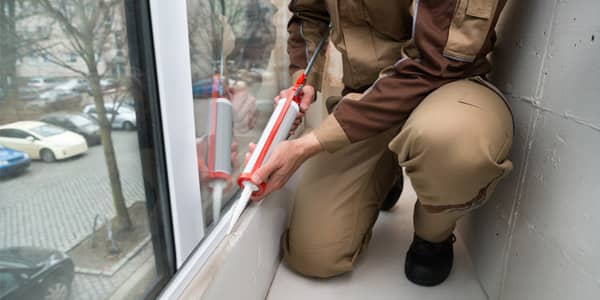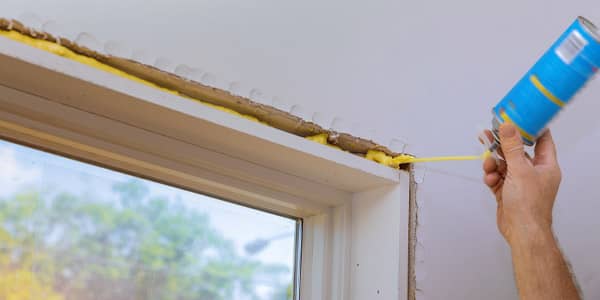Under-Insulated Areas You May Be Overlooking


Staying Warm This Winter:
Under-Insulated Areas You May Be Overlooking
While we may all be seeing a light at the end of the tunnel, winter’s not over yet! You still have to ensure your total comfort during the cold weather of the next couple of months, but it’s easy to overlook your home’s insulation. That’s where you’re going to get the most for your investment – keeping costs low while keeping comfort levels and energy efficiency high.
Inadequate insulation can really be felt in the winter and indeed all year round, leading to higher energy bills as well as internal damage. Here’s how to ensure your home remains protected from the elements for the rest of the season and beyond.
Common Areas That Are Overlooked
Many homeowners neglect to regularly check their insulation situation because it’s out of sight, out of mind. Usually the only time you think to check on your insulation is during a remodel or renovation project. Here’s a look at the areas of your home that are prone to lack of sufficient insulation.
Pipes
If you have uninsulated pipes, they can freeze if the temps dip low enough. Water in your pipes will turn to ice, which will expand and crack your pipes. Then, as the ice thaws, the water will leak out of those cracks and damage the rest of your home. Insulating your pipes is essential in cold climates.
Doors and Windows
Gaps around doors and windows usually feature weather stripping that keeps cold air from getting in and warm air from getting out. But weather stripping isn’t meant to last forever. It gets brittles, worn and cracked, losing its effectiveness over time. You will experience chilly drafts through those gaps, plus condensation can form which will lead to water damage and mold. Check your weather stripping once every winter and replace it if worn.
Outdoor Faucets
Just like your interior pipes, outdoor faucets can freeze in winter. If you don’t insulate the areas around the spout, ice expansion can occur. This leads to holes in your walls come the spring.
Attics and Basements
If you have holes or gaps in your insulation, this will keep your attic from trapping heat. If you fail to properly insulate your basement, this can lead to mold and mildew growth. You need to strike a good balance in these areas so you can get the proper temperature all year long.
Garages
You don’t have to insulate your garage, especially if you just use it for storing your car, lawn equipment and storage. But if you plan to use it as a craft room, man cave, office, play room or some other purpose, you will need to insulate it just like the rest of the house. If you don’t, temperature fluctuations will occur such as cold drafts and lots of condensation that will radiate through the entire property.
Vents and Ducts
Insufficient, old or damaged insulation in vents and ducts could send cold air into your home, while allowing heated air to escape. Now, your heating system has to work harder to stabilize the temperatures, costing you more money.
Crawlspaces
Poor insulation in these areas will bring cold drafts up through the floors, increasing the presence of moisture in the air.
Chimneys
Chimneys allows lots of drafts to get into your home, especially if they’re old and have cracks and gaps.
Ceilings
Uninsulated ceilings allow for cold drafts and moisture damage, not to mention the chance for pest infestation.
Contact Addict Insulation
Do you think you’ve overlooked some areas in your home when it comes to insulation? We can check it out for you and let you know what needs to be done for optimal comfort and energy efficiency. Just contact your trusted insulation contractors in St. Charles and one in St. Louis.
Energy Saving BlogInsulation Services in Missouri
- Residential Property
- Insulation Upgrade
- Soundproofing
- Thermal Performance
- Commercial Property
- Increased R-Value
- New Construction
- Energy Efficiency
Popular Articles
- FAQs About Insulation in Missouri
- What Areas Should You Insulate Before Winter?
- The Greatest Risks to Your Home Caused by Poor Insulation
- Why Your Utility Bills Are So High and What You Can Do About It
- Can You Put New Insulation Over Old?
- Here Are 3 Ways Your Attic Could be Contaminated
- How Home Insulation Works in the Summer
- Tips and Tricks For Summer Insulation
- How to Fix Indoor Condensation
- Choosing the Right Spray Foam Contractor
- Why You Need Power Washing This Spring
- Don't Let Air Escape Your Home
- Tips For Saving on Your Energy Bills This Summer
- Should I Install a Radiant Barrier in My Home?
- Are You Wondering if Your Attic Has Enough Insulation?
- Do I Have to Replace Wet Insulation?
- Insulating Your Sunroom
- Should You Insulate Your Outdoor Spaces?
- All About Removing Insulation
- What to Know About Insulating a Crawl Space
- How to Spot Mold in Your Wall Insulation
- How to Prevent Moisture in Your Warehouse With Spray Foam Insulation
- What Factors Cause Heat Gain?
- The Problems That Come With Improper Insulation
- Insulation FAQs
- Why Should You Check the Insulation When Buying a Home?
- Why Seal and Insulate Your Home?
- Home Insulation: Safety and Health
- Should You Remove Old Insulation During Replacement?
- Can I Stay Inside My Home During Spray Foam Insulation Installation?
- Pros and Cons of Converting an Attic
- Pros and Cons of Converting an Attic
- When’s the Best Time to Insulate Your House?
- The Difference Between Blown Insulation and Spray Foam Insulation
- Is Your Garage Loft Too Hot or Too Cold? Heed These Tips
- 6 Health Benefits of Having a Quiet Home
- Insulation Prep is Critical For Installation
- The Dangers of Removing Insulation on Your Own
- What’s the Most Eco-Friendly Insulation?
- 7 Benefits of Spray Foam Insulation
- What is the Proper Insulation For Vaulted Ceilings?
- Signs Your Crawlspace Insulation Should be Replaced
- Why You Should Insulate Your Basement Walls
- Most Effective Ways to Soundproof Your Home Office
- How to Insulate an Old House
- 4 Tips to Make Your Attic More Energy Efficient
- Attic Insulation Problems: 5 Things to Look Out For
- What Causes Condensation on Interior Walls?
- How Deep Should Your Insulation Be?
- What to Consider When Choosing an Insulation Company
- Can You Add New Insulation Layers Over Old Ones?
- When Should You Remove Insulation?
- 7 Tips For an Energy Efficient Summer
- Creating a Healthy, Comfortable and Productive Workspace When Working From Home
- Why is Roof Ventilation Just as Important as Insulation?
- Why Spring is a Good Time to Insulate Your Attic
- 5 Signs of Damaged or Insufficient Insulation
- Is the Insulation in Your Walls Making You Sick?
- Under-Insulated Areas You May Be Overlooking
- The History Of Insulation.
- Pros and Cons of Attic Insulation
- Do You Need Insulation When Finishing a Basement?
- What is Drill and Fill Insulation?
- Which Insulation is Best for Garage Walls?
- How Air is Escaping Your Home and How to Prevent It
- 10 Things You Must Absolutely Insulate Before Winter
- 5 Reasons To Not DIY Insulation
- 5 Signs of an Under-Insulated Home
- 5 Benefits of Blown Insulation
- Cellulose vs. Fiberglass Insulation
- When is Insulation Removal Necessary?
- Tips to Keep Your Home Cool This Summer
- What is the Best Insulation for a Flat Roof?
- 5 Benefits of Power Washing
- Q & A About Insulation
- Reviews
- Energy Saving Blog






